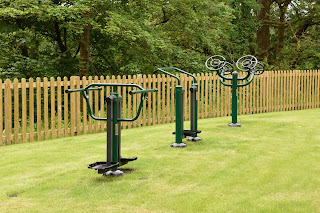Creating Inspiring Learning Environments with Quality School Furniture
In today’s educational landscape, the importance of a conducive learning environment cannot be overstated. The physical spaces where students learn significantly influence their engagement, comfort, and overall academic performance. One of the critical elements in designing such spaces is selecting the right furniture for schools. From desks and chairs to storage solutions, high-quality school furniture plays a pivotal role in fostering productive and inspiring educational environments.
The Significance of Choosing the Right School Furniture
School furniture is more than just functional items; it shapes the classroom experience. Well-designed furniture supports varied learning styles, accommodates students of different ages and sizes, and promotes good posture and health. When furniture for schools is thoughtfully selected, it encourages collaboration, creativity, and focus, making the classroom a pleasant place to learn.
Moreover, durability is a key consideration. Schools endure daily use, and furniture must withstand wear and tear over years. Investing in sturdy, reliable pieces ensures longevity and reduces the need for frequent replacements, ultimately providing better value for educational institutions.
Ergonomics and Comfort in Educational Spaces
Comfort and ergonomics are essential aspects of effective school furniture. Ergonomically designed chairs and desks help maintain proper posture, reducing discomfort and potential health issues among students. Comfortable furniture can also enhance concentration and participation, especially during long hours of study or activities.
Educational institutions should prioritize adjustable furniture options, allowing for customization to suit different students' needs. Adjustable desks and chairs can accommodate growth and varying preferences, making learning spaces more inclusive and adaptable.
Creating Flexible and Dynamic Learning Environments
Modern classrooms are evolving from traditional, rigid setups to flexible environments that support various teaching methods. Furniture for schools now includes modular and mobile options that can be easily reconfigured for group work, individual study, or interactive lessons.
This flexibility encourages active learning, student collaboration, and dynamic teaching approaches. Furniture that can be moved and adapted quickly helps teachers create engaging lessons without being limited by fixed layouts. Such adaptability is vital for fostering a stimulating educational environment.
Sustainability and Eco-Friendly Choices
As awareness around environmental responsibility grows, schools are increasingly opting for eco-friendly furniture options. Sustainable materials, low-VOC finishes, and manufacturers committed to environmentally conscious practices contribute to healthier indoor air quality and a smaller ecological footprint.
Choosing sustainable school furniture aligns with broader educational goals of environmental stewardship, setting a positive example for students. It also ensures that the furniture is safe, non-toxic, and suitable for prolonged use in busy educational settings.
The Role of Design and Aesthetics
Aesthetic appeal matters just as much as functionality when it comes to school furniture. Bright, inviting colors and modern designs can make learning spaces more appealing and lively. Well-designed furniture can influence students’ mood and motivation, fostering a positive attitude toward education.
Furthermore, cohesive design themes can create a unified look throughout the school, enhancing the overall environment. The right furniture can transform plain classrooms into inspiring spaces that encourage curiosity and enthusiasm for learning.
Customization and Tailored Solutions
Every school has unique needs based on its size, curriculum, and student demographics. Customized furniture solutions allow educational institutions to optimize their spaces effectively. From specialized furniture for science labs to comfortable seating for libraries, tailored options ensure that each area serves its purpose efficiently.
Working with reputable suppliers that understand the specific requirements of educational environments can lead to better outcomes. Customization also allows for integrating branding elements, creating a sense of identity and pride among students and staff.
Investing in Quality for Long-Term Benefits
While budget considerations are always important, prioritizing quality ensures that the furniture for schools remains functional and attractive over many years. High-quality materials and craftsmanship minimize maintenance costs and prevent frequent replacements.
Long-term investment in durable school furniture contributes to a stable, attractive environment that supports learning and growth. It also reflects a commitment to providing students with a safe and inspiring educational setting.



Comments
Post a Comment